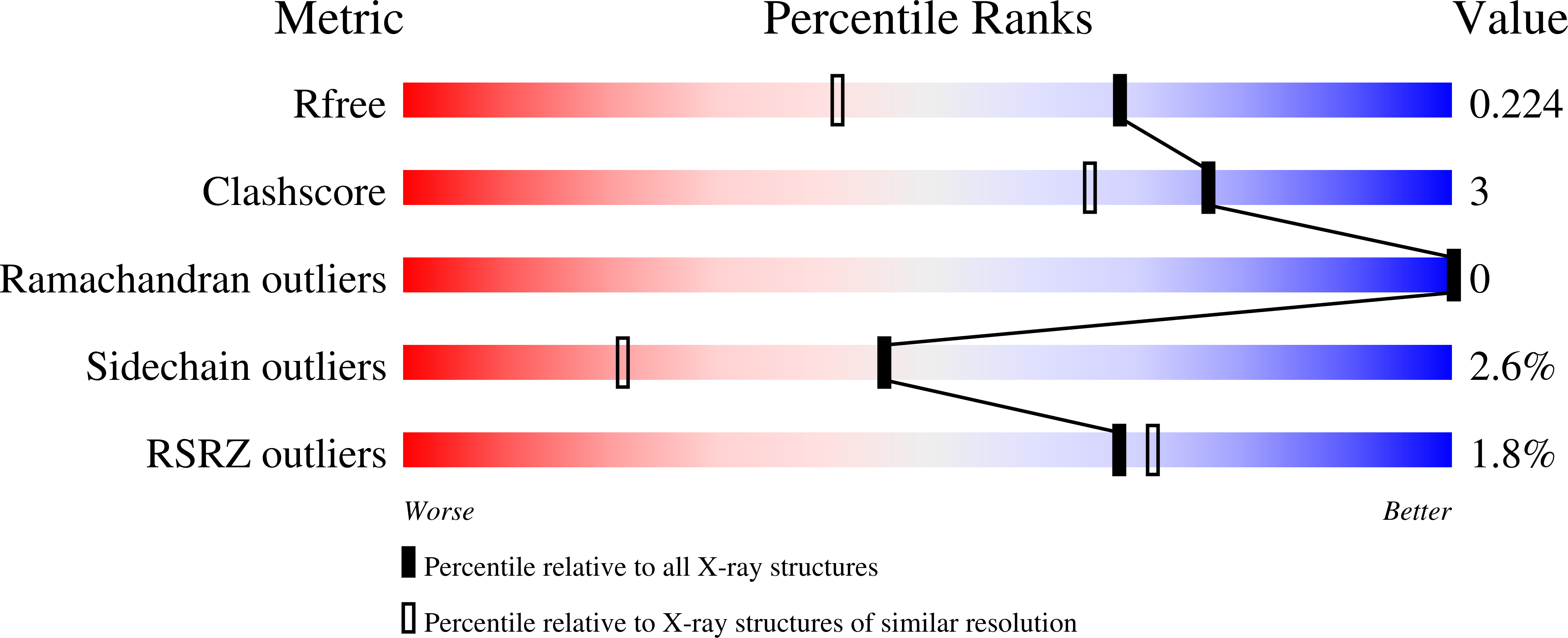Molecular mechanism of phosphopeptide neoantigen immunogenicity.
Patskovsky, Y., Natarajan, A., Patskovska, L., Nyovanie, S., Joshi, B., Morin, B., Brittsan, C., Huber, O., Gordon, S., Michelet, X., Schmitzberger, F., Stein, R.B., Findeis, M.A., Hurwitz, A., Van Dijk, M., Chantzoura, E., Yague, A.S., Pollack Smith, D., Buell, J.S., Underwood, D., Krogsgaard, M.(2023) Nat Commun 14: 3763-3763
- PubMed: 37353482
- DOI: https://doi.org/10.1038/s41467-023-39425-1
- Primary Citation of Related Structures:
7RZD, 7RZJ, 7S79, 7S7D, 7S7E, 7S7F, 7S8A, 7S8E, 7S8F, 7S8I, 7S8J - PubMed Abstract:
Altered protein phosphorylation in cancer cells often leads to surface presentation of phosphopeptide neoantigens. However, their role in cancer immunogenicity remains unclear. Here we describe a mechanism by which an HLA-B*0702-specific acute myeloid leukemia phosphoneoantigen, pMLL 747-755 (EPR(pS)PSHSM), is recognized by a cognate T cell receptor named TCR27, a candidate for cancer immunotherapy. We show that the replacement of phosphoserine P 4 with serine or phosphomimetics does not affect pMHC conformation or peptide-MHC affinity but abrogates TCR27-dependent T cell activation and weakens binding between TCR27 and pMHC. Here we describe the crystal structures for TCR27 and cognate pMHC, map of the interface produced by nuclear magnetic resonance, and a ternary complex generated using information-driven protein docking. Our data show that non-covalent interactions between the epitope phosphate group and TCR27 are crucial for TCR specificity. This study supports development of new treatment options for cancer patients through target expansion and TCR optimization.
Organizational Affiliation:
Department of Pathology, New York University Grossman School of Medicine, New York, NY, USA.
















